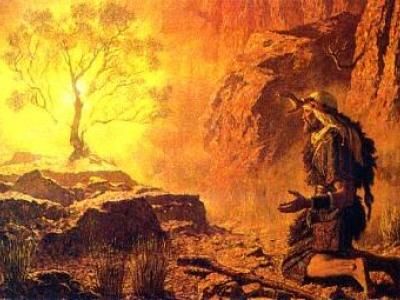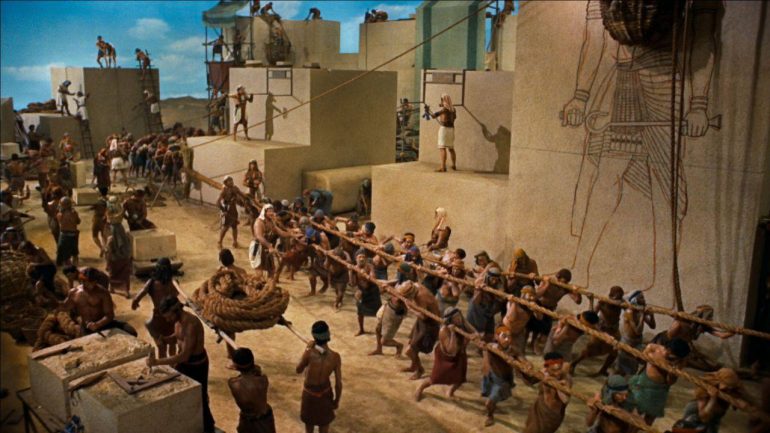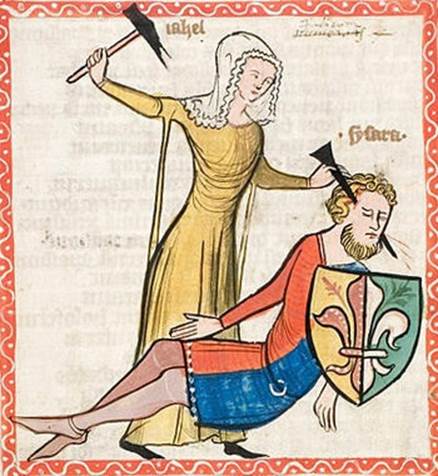OPPRESSED SLAVES

BRICKS WITHOUT STRAW
One example of a fictional literary device occurs with the element of the bricks without the straw which is pointed to as a sign of the tale’s historicity.
7 “You are no longer to supply the people with straw for making bricks; let them go and gather their own straw. Exodus 5:7
In this story, the pharaoh is so cruel that he will not give the slaves a material supposedly vital to their brickwork but forces them to labor harder in order to procure the straw themselves. Christian apologists claim that such bricks without straw found in Egypt serve as proof that the Exodus happened, and in spiritual terms, signifying that, with the help of God, bricks can be made without straw.
This fictional element may have been included also for realism, in order to show that the writer of the story knew how to make bricks and therefore their role as brickmakers is given credibility. Fiction writers include such typical details on a regular basis, in order to produce a realistic setting for their stories.
Remarks of British clergyman Rev. Henry Villiers Stuart (1827–1895) observing purported straw-free bricks at the then newly excavated site of Pithom. Villiers Stuart exclaimed that he had never seen such bricks anywhere outside of this site, a discovery therefore lending credibility to the Exodus story. However, Egyptologist Dr. James H. Breasted (1865–1935) responded, “We can only say that Mr. Stuart’s observations cannot have been very extended, for ancient bricks without straw were common enough in Egypt.”
Villiers Stuart was not a professional Egyptologist or archaeologist, and his pronouncements in this regard rate as flawed, outdated and irrelevant.
In reality, the verses in Exodus do not say that the Hebrews could not use straw; the relevant passage states that the people must gather their own straw, which means they could have done so and not had strawless bricks at all. Moreover, even where such strawless bricks have been found, they serve only as evidence that at times there was no available straw. They do not have stamped on them, “Made by Hebrew Slaves,” and they do not serve as evidence that Exodus actually occurred.
RARE STRAW
In fact, such strawless bricks appear to have been typical, and this apology is erroneous. Ancient mud brickmaking required much the same as it does today, including straw added to the mold to prevent sticking, but not for the bricks themselves. In this regard, Rupert Furneaux remarks:
The denial of supplies of straw to the Israelites often leads to the speculation as to how they could have made bricks without straw. But straw or stubble was not used in the bricks themselves: it was sprinkled on the workmen’s hands to prevent the mud bricks from sticking, and the withdrawal of the straw issue made their task more difficult.
Discussing the subject of ancient brickmaking, evangelical archaeologist Dr. Joseph P. Free states:
On the basis of the biblical record, it has usually been assumed that straw was necessary as binding material, that bricks could not be made satisfactorily without straw, and the Egyptian bricks generally contained a certain amount of straw.
On the contrary, T. Eric Peet, Egyptologist of the University of Liverpool, stated that the use of straw in making bricks was “somewhat rare” in ancient times and that the Nile mud coheres so well that any binding material would be quite unnecessary… He added that the reference to the use of straw in brick making is often used to demonstrate the biblical writer’s acquaintance with Egyptian customs, but that it actually proves his ignorance of Egyptian practice… Peet’s treatment of the matter leaves one with the impression that the Bible was wrong in implying that straw was necessary in making bricks.
As does Free, Bible literalists will claim that Peet’s declarations are overstated, because ancient mud bricks are found commonly enough with straw both visible and invisible in them; hence, we know that straw was used to make them. Again, it is true that straw was used to make mud bricks, and evidence of it may exist on the outside from the molds. However, there are also mud bricks without much if any straw in many places, evidence that does not prove the Exodus to be historical. Moreover, many people in antiquity would probably know that much about brickmaking, without being brickmaking slaves themselves.
This motif also may be from pre-biblical mythology, for example possibly concerning the Egyptian creator god Ptah. Even if this Egyptian story was not employed to create the biblical tale, this one element does not serve to prove historicity of any sort, as it simply may be a literary device for the purposes of the plot.
THE BURNING BUSH
From the start of the Exodus story we encounter implausible tales best viewed as myth. At Exodus 3:2, the Lord God of the universe is depicted as speaking to Moses through a burning bush. Surely, we cannot be expected to accept this tale as historical, particularly since, if the Almighty could appear to Moses in such a form, he could take care of shepherding his people out of Egypt much more easily than the plan he purportedly came up with for the lawgiver.
2 And the Angel of the Lord appeared to him in a flame of fire from the midst of a bush. So he looked, and behold, the bush was burning with fire, but the bush was not consumed.
Then we have, as the omnipotent Lord of the universe, is concerned about Moses wearing shoes to walk on the patch of dirt in front of him:
“Then he said, ‘Do not come near; put off your shoes from your feet, for the place on which you are standing is holy ground.’” Exodus 3:5
Thus, Yahweh appears in a finite form on a small piece of ground, a tale common in the Greek or Roman myths about Zeus/Jupiter or any number of gods and goddesses manifesting themselves to humans over millennias of time.
Adding to this the Lord says unto Moses,
“I know that the king of Egypt will not let you go unless compelled by a mighty hand.” Exodus 3:19
Yahweh hardens pharaoh’s heart, thereby increasing the suffering beyond all comprehension, when he just as easily could have softened it. And it is clearly NOT Pharaoh who is responsible for his hardened heart actions.

JEWS WERE SLAVES = BAD,
BUT NOW JEWS ARE SLAVE OWNERS = GOOD!!!
Included in this biblical discussion of the Biblical commandments is the ones concerning slavery, at Exodus 21, in which the “Lord” does not forbid it but, says it is OK for the Isrealites. And God gives specific instructions on how it should be carried out. This God instruction casts grave doubt on this passage and represents nothing more than the will of the moneyed Isrealite elites of the time. It is NOT God speaking from heaven!
22 Then the Lord said to Moses, “Tell the Israelites this: ‘You have seen for yourselves that I have spoken to you from heaven: Exodus 20:22
6 then his master must take him before the judges. He shall take him to the door or the doorpost and pierce his ear with an awl. Then he will be his servant for life. Exodus 21:6
